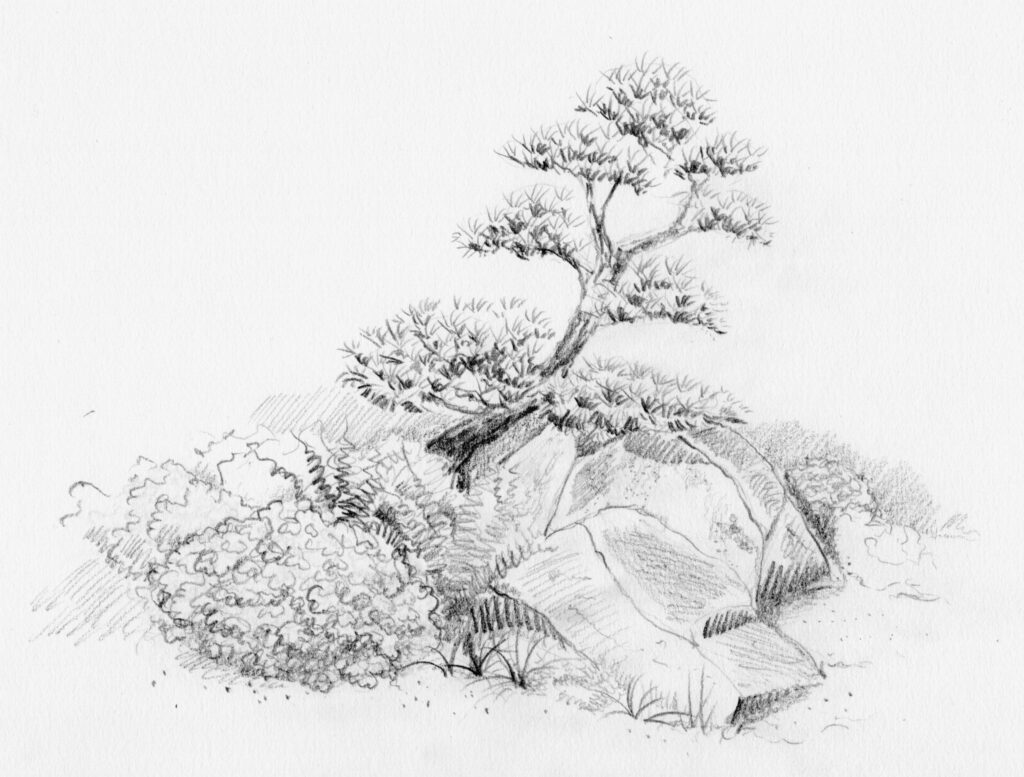With more and more people living in cities, the urban development is ever denser and taller. The new development is also rarely attractive. Thus the problem that city garden owners face is more and more common: unsightly views. There is a lot of advice out there how to block an ugly view. But the fact is, you cannot hide a five-storey-tall building just across the street. However, you can stop looking at it when you master attention guiding in your garden.
Is the thuja cage the best idea?
The response to ugly views and the lack of privacy is often dense, evergreen planting. Not an unusual sight is a barricade of conifers or bamboo in planters right around a patio or in front of windows. While they do the job of blocking the view, they do – guess what? – block the view, together with light and air. When looking from the inside, the eyes almost crash on the planting wall with too little interest on its own but nowhere to escape. Such a solution is thus only marginally better than the view of neighbouring property with its dustbins. But if not an impenetrable screen, then what?
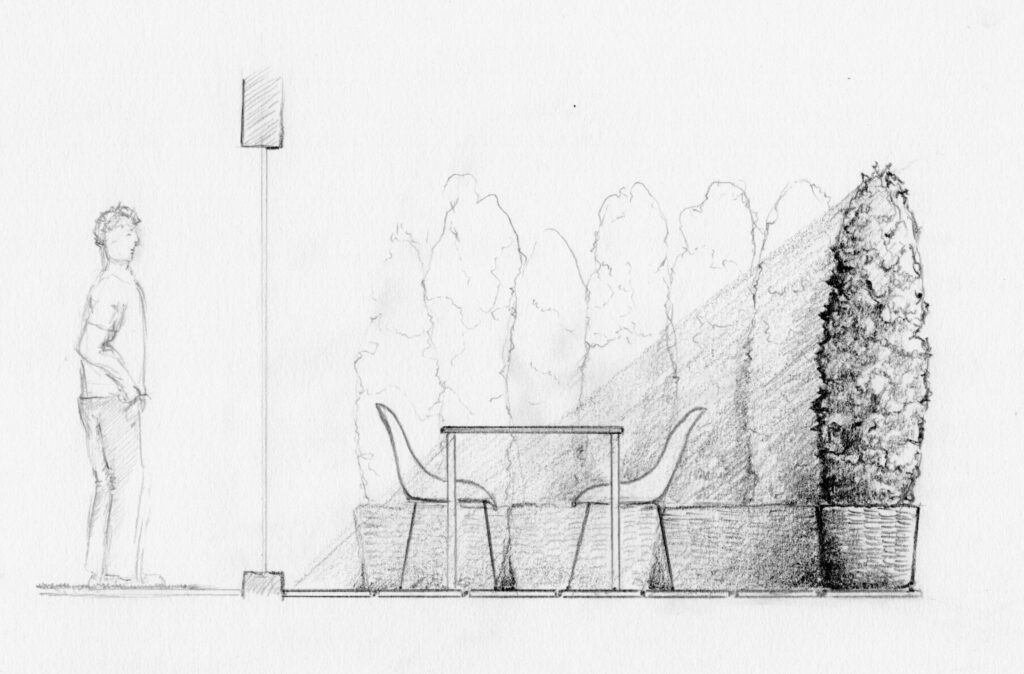
Tuned to relevant stimuli
Have you ever tried to take a photograph of a beautiful scene only to discover later that there is a piece of rubbish, or a power line, or an ugly building sticking like a sore thumb in a frame? How come you haven’t noticed it when composing the shot? This is the power of focused attention, and we can use it in small urban gardens to our advantage.
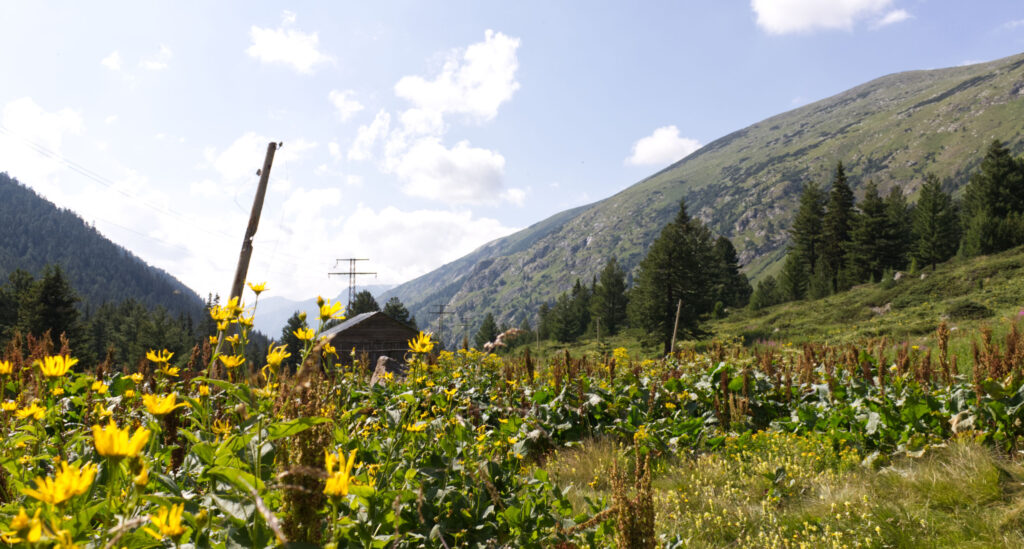
Human eyes see the scene differently than a camera. Our vision has a very shallow depth of field. In addition our brains are selective to only notice these things that matter to us at that very moment. To make a test for yourself, just concentrate on any object around you. While looking at that object, how much of other things do you see in focus? Probably very little and only in direct vicinity of the focal point. Hence, without a conscious effort, it is possible to ‘miss’ the context when concentrating on interesting detail when taking photographs. This phenomenon can be very effectively used to distract from unwanted sights in a small garden instead of hiding them.
Racing to boundaries
In a small overlooked garden, you want to keep awareness within the garden rather than outside. Naturally, your sight will wander between “interesting” things around you. In a plain field, your eyes will travel as far as the horizon. This implies that if between you and a boundary fence or hedge there is only a lawn, your attention will instantly focus on the barrier and whatever is sticking from behind it. The effect is particularly pronounced in small urban spaces but holds true even in medium size gardens. A ‘centrifuge planting’ – a thin flower bed along a fence around an empty lawn also draws attention to the boundary.
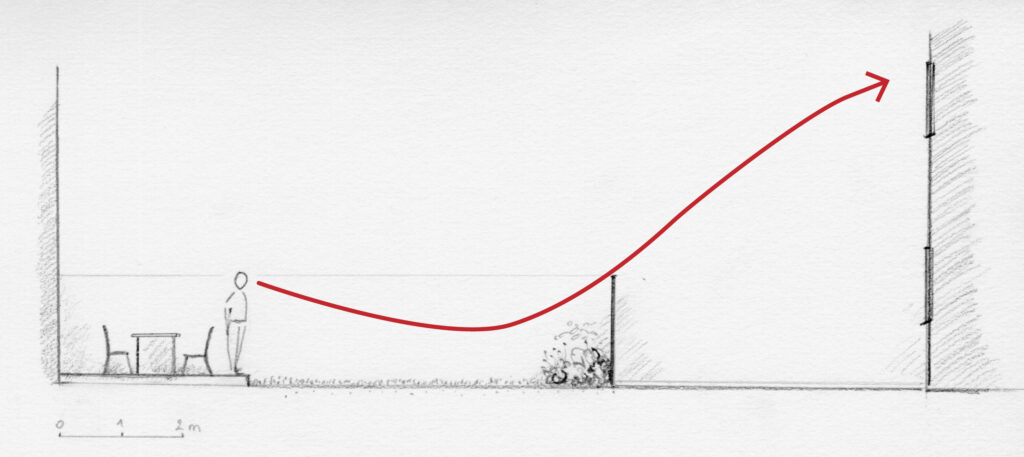
Slow down
What is the solution then? If the eyes travel in milliseconds over empty spaces, no matter how large they are, we need to slow them down by providing guiding lines and layers of interesting features along the way. Richly planted, wide flower beds with year-round interest will break the straight line of the eyesight and blur the boundaries. I particularly like to partially enclose the sitting area with tall, filigree flowers, such as Verbena bonariensis, Thalictrum or ornamental grass Calamagrostis. You first look at plants around you, and only then at what is behind them. At the same time, they don’t block the light and allow the moments of rest for the eyesight at a farther distance. You are likely to feel protected, but not caged.
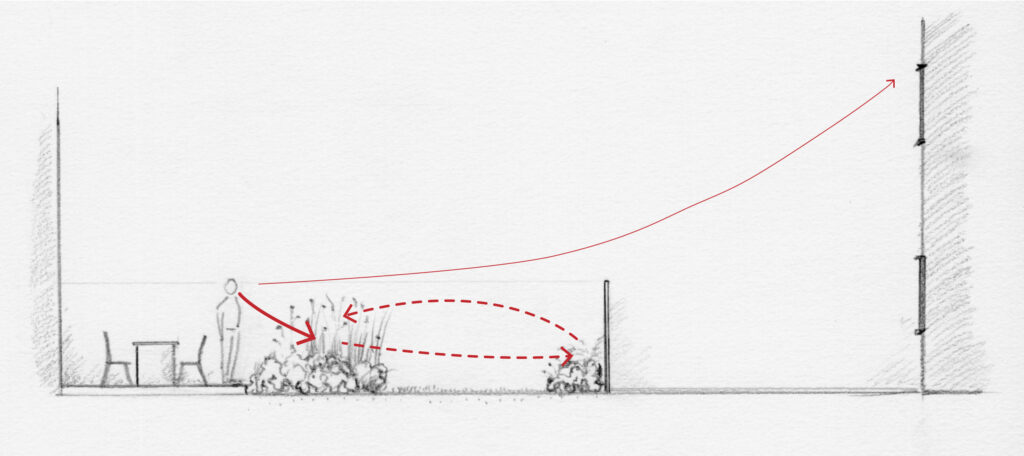
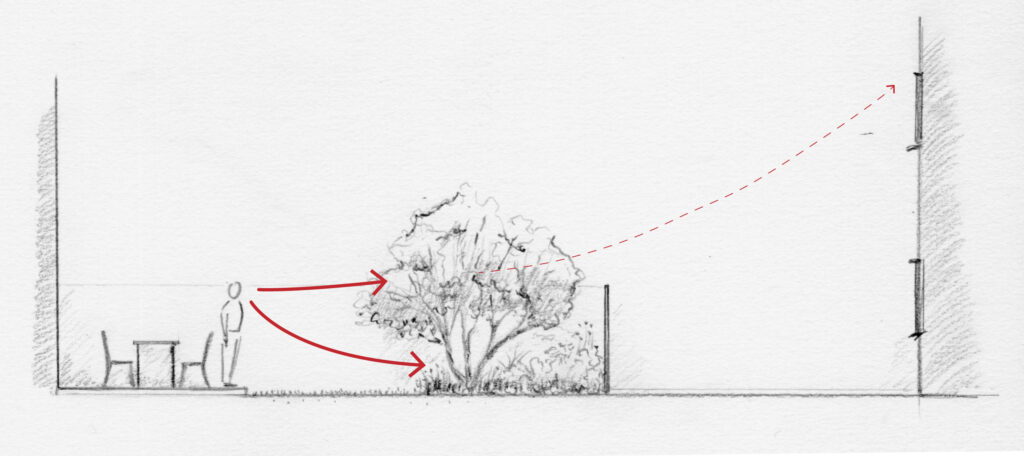
Keep it planted
Spiced with well balanced focal points, richly planted garden can hold the interest of the onlooker inside. The eyesight can circe back and forth over garden elements, only temporarily being distracted by the outside. The added benefit of slowing down the eye travel to the boundary is that the garden will seem larger. Subtle lighting can keep the trick going also after dark. A good rule is to make flower beds at least 2 m deep to be able to create visual layers. If there are just few meters from a house to the edge of the property, is it a good idea to keep a lawn?
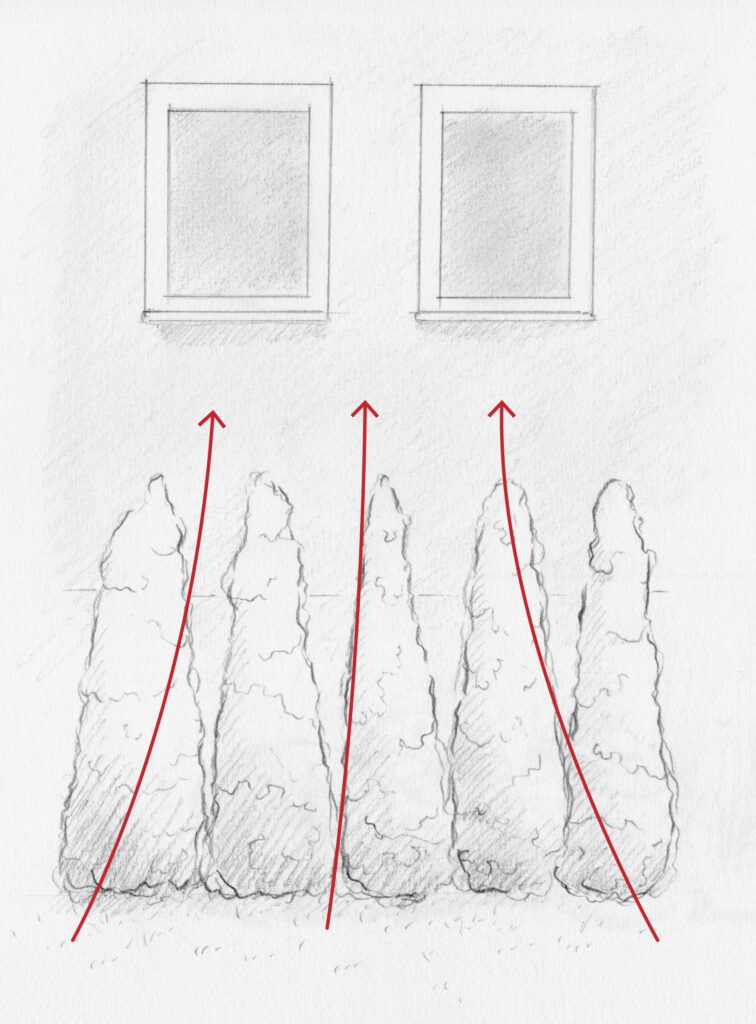
Guiding lines.
We have a tendency to visually follow the lines. Horizontal lines encourage scanning of the scene and looking around. Vertical lines guide the sight upwards. Pointy shapes – for example tall and thin conifers – work almost like arrows, which makes them probably the worse plants for boundaries. Basically, they lead the viewer directly to what they try to mask. Also beware of small ‘lollipop’ trees, whose high vertical trunks cleared from lower branches may also steer the eyesight upward and outward. Angled trunks and umbrella-shaped crown of a multi-stem tree are better suited to keep the focus inside the garden. Finally, squares and circles have a power to gently draw and hold attention at their centres.
Keep it low
The lesson is that using a good proportion of lower to medium size, rounded planting – such as topiary balls, tussocks of softly arching ornamental grasses, and flowers whose foliage creates mounded forms – will let the eyesight meander around the garden, slowly moving from one detail to another. Similarly, umbellifers, daisies, and other flowers with flat or rounded heads will encourage the attention to linger among planting. Groups of plants of the same kind also collectively form calming, rounded shapes, even when individual flowers are spiky.
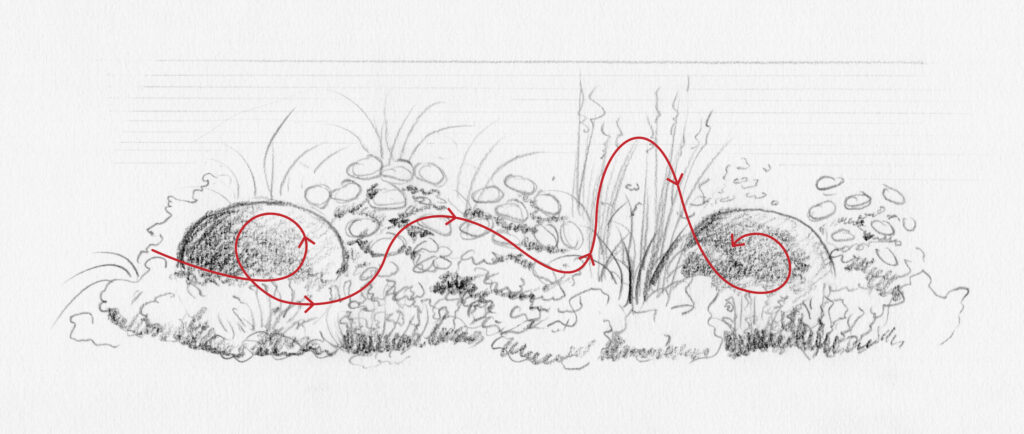
What about see-through boundaries?
Hornbeam or beech hedges, which are a popular choice in communities where I live, are see-through in late winter and spring. Local regulations may also prohibit erecting solid high fence or hedge at a street side, leaving inhabitants exposed to praying eyes of passersby. Good news – unless you have a pesky neighbour, who takes pleasure in tracking your every move, guiding attention works in the opposite direction as well. If a garden is empty, the first interesting thing to look at from the street is the house. However, if your garden is beautiful, most passersby will also first look at attractive flowers and only then at (and into) the building, by which time they are already gone. And if they stop to look – my experience tells – they will do so to admire tulips, not your kitchen.
If you would like to have a conversation about solutions that may be appropriate for your small garden, we may arrange a zoom conversation or a consultation visit.
